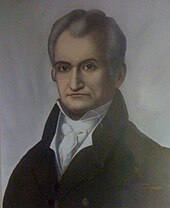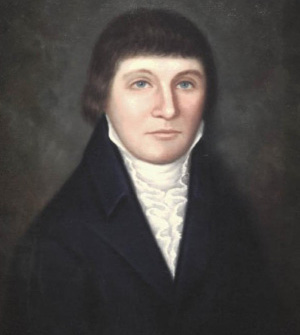Assembly membership
House of Commons members




There were 114 positions authorized for the House of Commons in this assembly, including one representative from each of six districts and 54 counties. Only 105 delegates are known to have attended this House of Commons assembly. [7] [5]
Fayette County, which was formed in July 1784 from the eastern part of Cumberland County, reverted to Cumberland County three months later, so does not appear in this assembly. [5]
Greene, Sullivan and Washington Counties had formed the State of Franklin in an attempt to create a new state. They did not send representatives to this assembly. [8] [9]
Anson, Bladen, and Gates County only sent one elected official to the House of Commons. [5]
The House of Commons delegates elected a Speaker (Richard Dobbs Spaight), Clerk (John Hunt), Assistant Clerk (John Haywood), Doorkeeper (Peter Gooding), and Assistant Doorkeeper (James Malloy). The following delegates to the House of Commons were elected by the voters of North Carolina to represent each county and district: [3] [4] [5] [7]
| County/District | Delegate |
|---|---|
| Anson | James Terry [note 2] |
| Anson | Vacant / Unknown |
| Beaufort | Henry Smaw |
| Beaufort | John Gray Blount [10] |
| Bertie | Thomas Collins |
| Bertie | Andrew Oliver |
| Bladen | James Richardson |
| Bladen | Vacant / Unknown |
| Brunswick | Jacob Leonard |
| Brunswick | David Flowers |
| Burke | Joseph McDowell |
| Burke | Waightstill Avery |
| Camden | Enoch Sawyer |
| Camden | Selby Harney |
| Carteret | David Cooper |
| Carteret | Eli West |
| Caswell | Robert Dickens |
| Caswell | Adam Sanders |
| Chatham | Joseph Stewart |
| Chatham | Roger Griffith |
| Chowan | Dr. Hugh Williamson |
| Chowan | Clement Hall |
| Craven | Richard Dobbs Spaight |
| Craven | Abner Neale |
| Cumberland | Robert Rowan |
| Cumberland | David Smith |
| Currituck | Joseph Ferebee |
| Currituck | Dr. James White |
| Davidson | Elijah Robertson |
| Davidson | William Polk |
| Dobbs | Benjamin Coleman |
| Dobbs | William Sheppard |
| Duplin | Robert Dickson |
| Duplin | Joseph Thomas Rhodes |
| Edgecombe | Robert Diggs |
| Edgecombe | Etheldred Phillips |
| Franklin | Thomas Sherrod |
| Franklin | Durham Hall |
| Gates | Vacant / Unknown |
| Gates | Seth Riddick |
| Granville | Thomas Person |
| Granville | Philemon Hawkins, Jr. |
| Greene | Vacant |
| Greene | Vacant |
| Guilford | John Hamilton |
| Guilford | Barzillai Gardner |
| Halifax | John Whitaker |
| Halifax | John Baptista Ashe |
| Hertford | James Manney |
| Hertford | Robert Montgomery |
| Hyde | John Eborne |
| Hyde | Thomas Jordan, Jr. [note 3] |
| Johnston | Hardy Bryan |
| Johnston | Benjamin Williams |
| Jones | Abner Nash |
| Jones | John Isler |
| Lincoln | John Sloan |
| Lincoln | Daniel McKissick |
| Martin | Edmund Smithwick |
| Martin | Samuel Williams |
| Mecklenburg | Caleb Phifer |
| Mecklenburg | George Alexander |
| Montgomery | James McDonald |
| Montgomery | Charles Robertson |
| Moore | John Cox |
| Moore | John Carroll |
| Nash | Micajah Thomas |
| Nash | John Bonds |
| New Hanover | James Bloodworth |
| New Hanover | John Pugh Williams |
| Northampton | Howell Edmunds |
| Northampton | Augustin Woods |
| Onslow | Edward Starkey |
| Onslow | Reuben Grant |
| Orange | William Courtney |
| Orange | William Cain |
| Pasquotank | Edward Everagin |
| Pasquotank | Abraham Symons |
| Perquimans | John Skinner |
| Perquimans | Robert Riddick |
| Pitt | John Jordan |
| Pitt | Richard Moye |
| Randolph | Joseph Robbins |
| Randolph | Aaron Hill |
| Richmond | Robert Webb |
| Richmond | Benjamin Covington |
| Rowan | Matthew Locke |
| Rowan | George Henry Barrier, aka George H. Berger |
| Rutherford | Richard Singleton |
| Rutherford | George Moore |
| Sampson | David Dodd |
| Sampson | John Hay |
| Sullivan | Vacant |
| Sullivan | Vacant |
| Surry | William Lewis |
| Surry | James Martin |
| Tyrrell | Nehemiah Norman [note 4] |
| Tyrrell | Nathan Hooker |
| Wake | James Hinton |
| Wake | William Hayes |
| Warren | Henry Montfort |
| Warren | Wyatt Hawkins |
| Washington | Vacant |
| Washington | Vacant |
| Wayne | William Taylor |
| Wayne | John Handley |
| Wilkes | Jesse Franklin |
| Wilkes | William T. Lewis |
| Edenton District | Stephen Cabarrus |
| Halifax District | Dr. Charles Pasteur |
| Hillsborough District | John Taylor |
| New Bern District | William Tisdale |
| Salisbury District | Thomas Frohock [11] |
| Wilmington District | Archibald MacLaine |
Senate members

The Senators elected a President (Alexander Martin), Clerk (John Haywood), Assistant Clerk (Sherwood Haywood), Doorkeeper (William Murphy), and Assistant Doorkeeper (Nicholas Murphy). The following Senators were elected by the voters of North Carolina to represent each county: [3] [4] [5] [12]
| County | Senator |
|---|---|
| Anson | Stephen Miller |
| Beaufort | John Smaw |
| Bertie | Jonathan Jaycocks |
| Bladen | Thomas Brown |
| Brunswick | Dennis Hawkins |
| Burke | Charles McDowell |
| Camden | Isaac Gregory |
| Carteret | John Easton |
| Caswell | Dempsey Moore |
| Chatham | Ambrose Ramsey |
| Chowan | Michael Payne |
| Craven | James Coor |
| Cumberland | Thomas Armstrong |
| Currituck | Willis Etheridge |
| Davidson | Anthony Bledsoe |
| Dobbs | John Herritage |
| Duplin | James Gillespie [note 5] |
| Edgecombe | Elisha Battle |
| Franklin | Henry Hill |
| Gates | Joseph Riddick |
| Granville | Howell Lewis |
| Greene | Vacant |
| Guilford | Alexander Martin |
| Halifax | Benjamin McCulloch |
| Hertford | Thomas Wynns |
| Hyde | Abraham Jones |
| Johnston | Arthur Bryan |
| Jones | Frederick Hargett |
| Lincoln | Robert Alexander |
| Martin | Vacant / Unknown |
| Mecklenburg | James Harris |
| Montgomery | Samuel Parsons |
| Moore | Henry Lightfoot |
| Nash | Hardy Griffin |
| New Hanover | John A. Campbell |
| Northampton | Samuel Lockhart [note 6] |
| Onslow | John Spicer [note 7] |
| Orange | William McCauley |
| Pasquotank | Thomas Relfe |
| Perquimans | William Skinner [note 8] |
| Pitt | John Williams |
| Randolph | Edward Sharpe |
| Richmond | Henry William Harrington |
| Rowan | Griffith Rutherford |
| Rutherford | James Miller |
| Sampson | Richard Clinton |
| Sullivan | Vacant |
| Surry | John Armstrong |
| Tyrrell | John Warrington |
| Wake | Thomas Hines |
| Warren | John Macon |
| Washington | Vacant |
| Wayne | Burwell Mooring |
| Wilkes | Benjamin Herndon |





